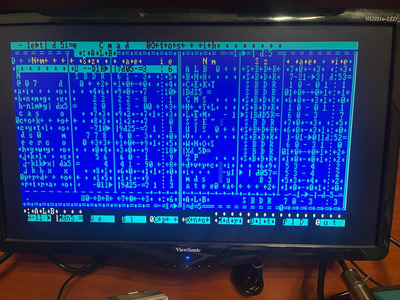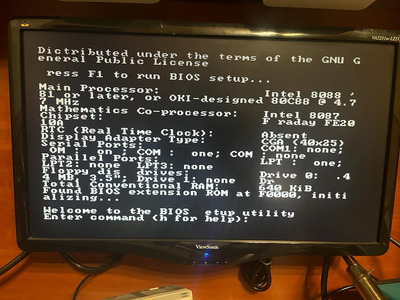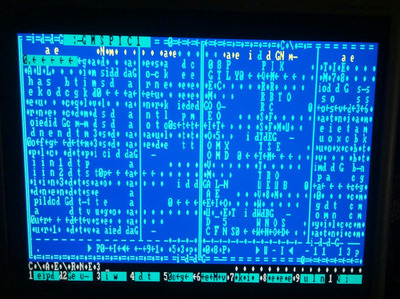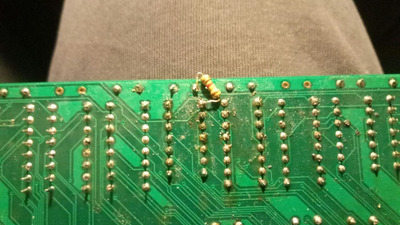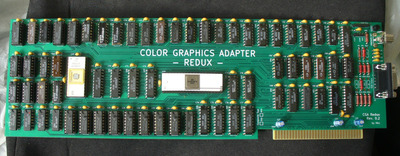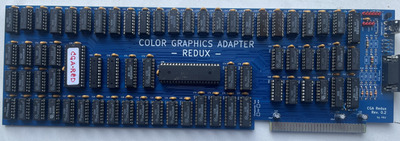First post, by Vlodek_d
Good evening ! Forced to ask for help, I am no longer able to solve the problem on my own.
So, CGA Redux card is assembled and even launched by me. However, in the 486DX motherboard it does not start at all; in a set with 386SBMC by Alexandru Groza starts, but quickly "hangs"; in a set with Xi8088 or Micro8088 by Sergey Kiselev almost works. The key word is "almost" (((
1) In the 40*25 mode, individual symbols fall out, the screen is generally readable, but the falling symbols are alarming... I did not find any regularity in the symbols that are not reproduced.
2) In graphics modes, the picture is almost completely adequate, only some pixels are "broken". I did not find any regularities in the "broken" pixels.
3) In the 80*25 mode - every second symbol is dropped, replaced by an "artifact", the screen is almost unreadable ... The regularity is obvious, besides, the attribute bytes are written and reproduced correctly - ????
Memory chips tested in a working ZX Spectrum clone. Almost all small logic tested in T48.MC6845 - i've have 3 pcs, three are known to be alive, the result is the same.
I hope that more experienced members of the community will have some thoughts on how to solve this problem. I apologize again for my imperfect English.
